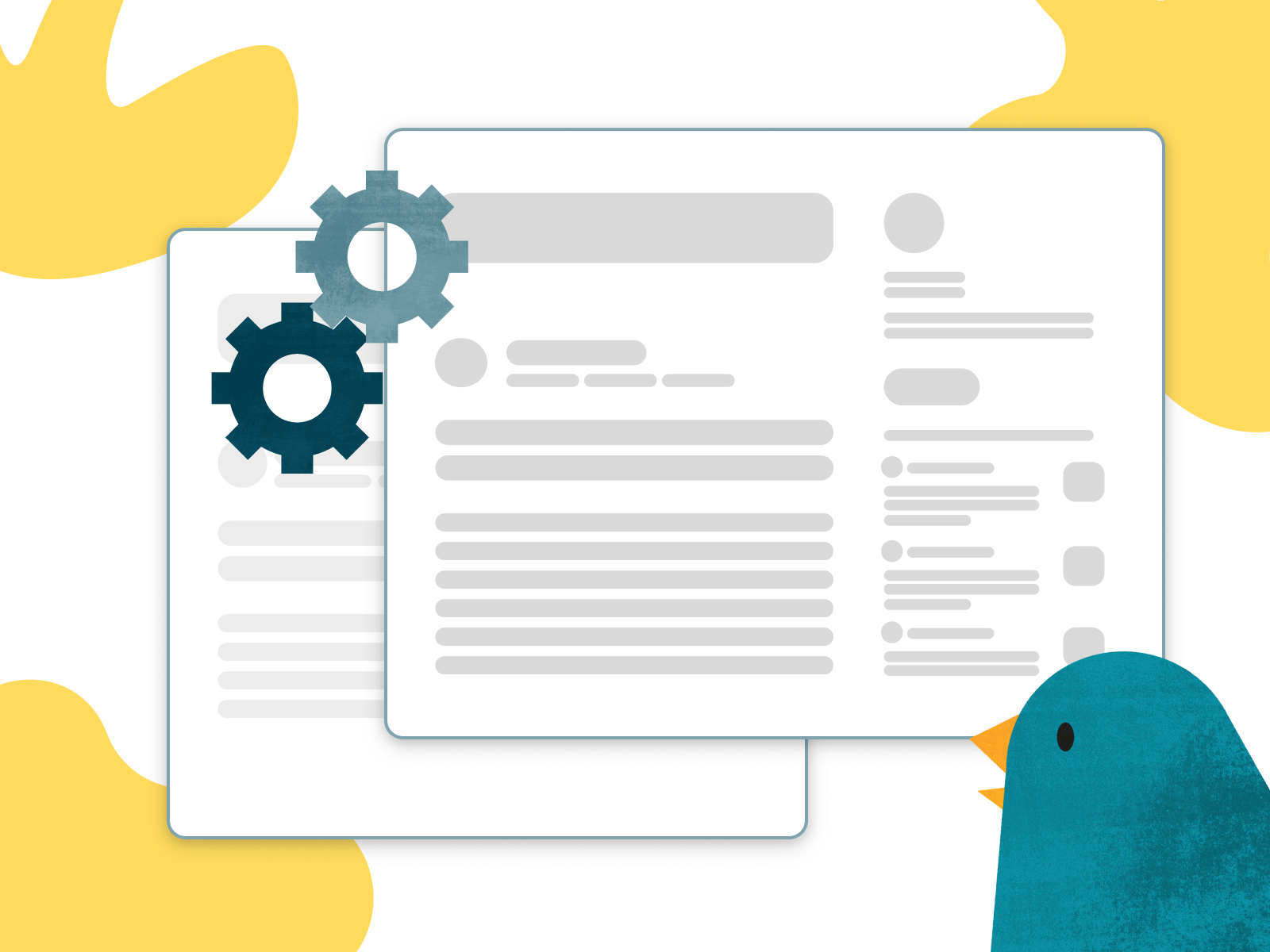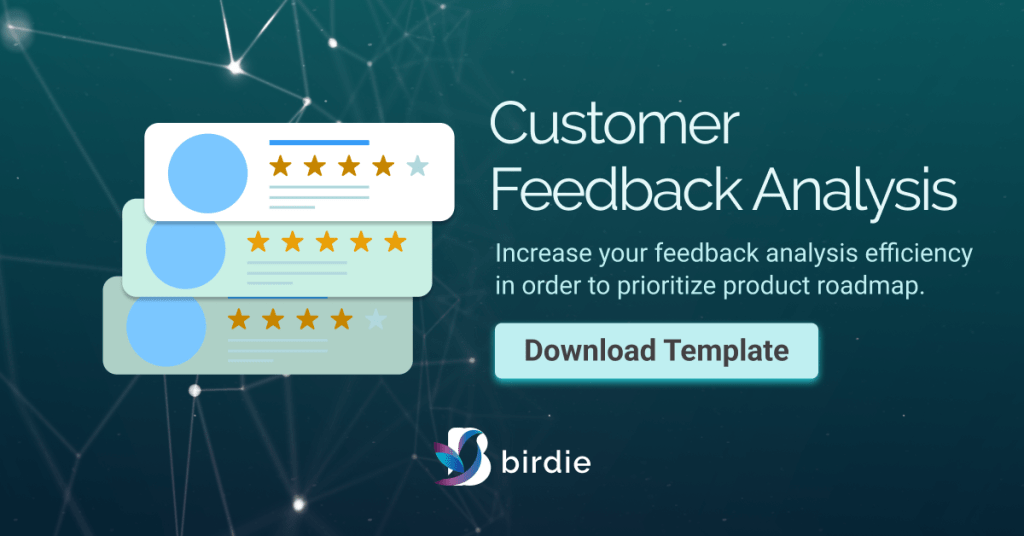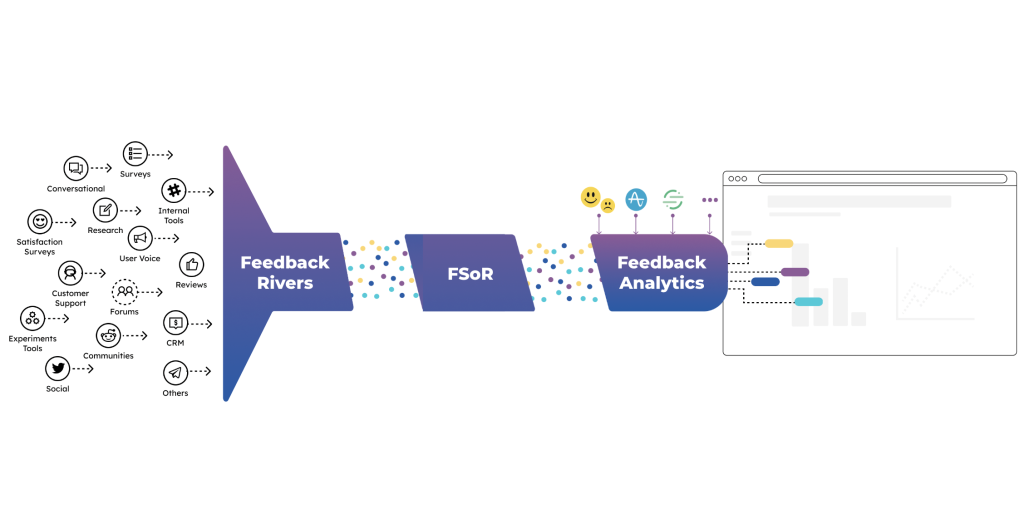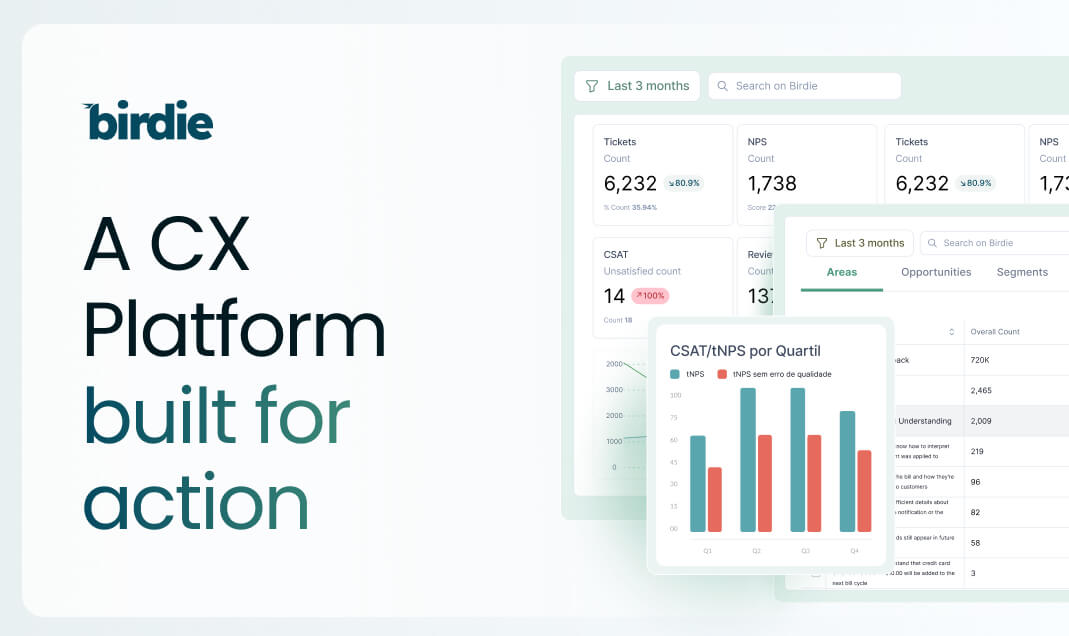

In times of customer-centricity, listening to the customer became a mantra inside most companies. Considering that 96% of customers would stop doing business with a company after having a bad customer experience, establishing processes that increase customer satisfaction is critical to reducing churn and ensuring business success.
In order to do so, companies need to rely on a customer feedback management system (CFM), which is the process of gathering and acting on customer feedback. The assumption is that listening to user feedback will allow you to take action and deliver a better experience to your customers.
While the concept of customer feedback management is widely spread among organizations, its focus is normally on a customer interaction perspective: customer service teams use it to collect and respond to feedback, and product managers rarely look at it.
As a consequence, most of the analyses are done from a perspective of how to serve customers rather than how to use their feedback to improve products, and companies miss the chance to leverage untapped insights that would allow them to build better products. But it shouldn't be like that: a customer feedback management system should be one of the most important tools in a product team's tech stack.
This post will walk you through the reasons for that and the key parts of a product-centric user feedback management system - one that focuses on consolidating and analyzing user feedback from a product perspective rather than collecting and responding to it, as the ladder a task that is commonly led by customer service and marketing teams.
Why is a customer feedback management system important for product teams?
According to Reforge, "great PMs use feedback management systems." They are important for product managers because they address the #1 assumption of great product management, which is being close to - and understanding - your user needs.
As previously stated, a Customer Feedback Management system is an established and automated process of feedback collection, organization, and analysis. It normally consists of combining different sources of feedback and enables companies to close their feedback loop.
As they centralize all input in a single system, feedback management systems remove the friction of having to access multiple sources of feedback that are normally siloed and sometimes hard to get to. They also make it easier to quantify and follow the trends related to the number of requests for a specific feature and let product managers have direct access to the voice of the customer without any intermediate person filtering what is being said.
As once said by Sachin Rekhi, great product management is 60% made of hard skills, such as discovery, roadmap prioritization, and data analysis, and 40% of soft skills - such as communicating effectively and building influence.
A customer feedback management system can definitely help with both the hard skills and soft skills - leading to mastering product management.

How can a feedback management system make you a better PM?
There are three critical aspects of being a great product manager that customer feedback management software can help with. First, they help you gather evidence to make and justify your roadmap prioritization. Second, they help you stay customer focused when making product decisions. And third, they help you develop a better product intuition. Here is how.
Evidence-based decision-making
People make decisions every day. Product managers do too - that's the core of their job. And making decisions is never easy, especially when it comes to deciding what you should build next. Having data to reduce uncertainty and estimate the impact of making that decision is very important.
As PMs need to be constantly in touch with other teams and leadership to expose ideas and influence others (which is an important soft skill by the way), having evidence to justify that decision, especially from user feedback, is also very important. According to Demian Boba, Principal Product Manager at Intuit, it's harder for other teams to question that type of data: "It's not about a PM's personal opinion anymore; it's about delivering what the customer needs."
Having a customer feedback management system in your tech stack makes it much easier to gather and consolidate evidence - and to report the results of your initiatives - to prove your strategic value as a product manager.
Establish a customer-centric approach
Customer-centric product management has been a mantra for several PMs. Customer-centricity, which means putting customers' needs and pains at the center of product development, is pretty much a core skill of great product managers. After all, we build products to solve real customer needs.
To become both customer-centric and product-centric, product teams need to make sure that customer feedback is considered first-class data and taken into consideration at every stage of your product management process - discovery, prioritization, delivery, and review.
Having a customer-centric approach is a lot about building that as part of your culture. Iin order to do that, having a customer feedback management process in place might not be mandatory, but is definitely helpful.
Develop your product intuition
Product intuition is an important aspect of great product management. The instinct of making good product decisions, even when you don't have enough information to do so, is acquired with time and experience.
But there are ways to accelerate it, and having customer feedback management systems in place is definitely one of them. According to Sachin Rekhi, having numerous feedback data points makes "you start to instinctively understand what will work and what won't."
That means that the more you build the habit of exposing yourself to direct user feedback, the more chances you start building product intuition. Customer feedback management software helps PMs reduce the friction in accessing and quantifying direct feedback, turning that into a habit that makes your intuition stronger, pretty much like a muscle.
The three elements of a feedback management system
A full customer feedback management system encompasses three key pillars: feedback river, feedback system of record, and feedback analytics. Let's dive deeper into each one of these elements and how you can establish them in your organization.

Feedback River
A feedback river is a system that consolidates multiple feedback sources - public and private, spontaneous and requested - into a single place.
Feedback rivers address a common complaint of product managers: not having time to run user interviews, which leads to lack of enough user feedback to make decisions. Truth is that relying only on user interviews is not scalable - it's expensive, time-consuming, slow, and normally narrow-focused (you can only interview a handful of people).
Building a stream of feedback where all of the feedback that your company receives, such as NPS surveys, micro surveys, support tickets, and even social media, go to, on a constant basis, allows you to literally have daily feedback coming in from real users in different contexts and moments of their journey. And that's not secondhand data: it's literally the Voice of Customer, with verbatim, sentiment, and context.
Feedback rivers solve this secondhand exposure problem by preserving user verbatims from the feedback sources. User verbatims are the exact comments users put in their original feedback submissions.
The feedback river directly passes the user verbatims along with each feedback input, giving the PM more first-hand exposure to the user and their needs.
A feedback river also addresses another common issue for PMs, which is establishing the habit of regularly looking at user feedback. This habit is normally hard to build because, even though they know about the importance of it, accessing customer feedback is a task with a lot of friction.
In most cases, PMs need to go after the input, something that can be bureaucratic and complex. Doing that on a regular basis and for multiple data sources becomes impossible without a feedback river - a place where you can enter and see consolidated feedback.
Feedback System of Record
A feedback system of record (FSOR) is a system of record that enables feedback storage, retrieval, and tracking.
FSORs are important to make sure that feedback is stored in a minimally organized manner, allowing common themes to be grouped together and displayed over time. This complements the feedback river in a way it groups different comments together into a topic.
While a feedback river is critical to ensure feedback is being gathered and accessed daily by PMs, helping them build a habit, the feedback system of record is critical to keep the summary recordings of feedback over time, avoiding a recency bias.
The most important aspect for a feedback system of record to work is, similarly to other SORs, making sure that it is kept up to date. This is particularly challenging in this case because feedback data is mostly unstructured data from different sources, with different types of comments, so it needs to be categorized in a way that makes sense.
Going through feedback, defining where to categorize it (i.e. bug, feature request, usability/UX), and registering that information is time-consuming and can lead to errors if not done correctly.
Building a good taxonomy of relevant topics can determine the success or failure of your customer feedback management system, especially when teams like customer support are involved in this process of tagging feedback. That's what will drive a good analysis and good product decisions.
That's where customer feedback analysis solutions - the third and final piece - enter.
Feedback Analytics
A feedback analytics system runs customer feedback analysis, which is the process of breaking user feedback down into smaller pieces, normally based on context and meaning, to become actionable.
Feedback analysis is the critical piece for an FSOR, and a customer feedback management system, to work. It allows product teams to run different subsets of analyses in order to uncover insights into what is working (or not), trending, and what could be improved in a product - always based on user feedback.
A good feedback analytics system allows teams to quickly find and group granular pieces of user feedback and easily categorize them, normally with the support of AI and NLP to accelerate this process and avoid misclassifications and other common issues mentioned previously.
It also allows them to build cohorts and segment them based on other aspects, such as quantitative and behavioral data, user profiles, and more. Finally, it makes it easier to build dashboards that can be shared with other teams for further exploration.
Although it's possible to build your own user feedback management system internally with the combination of existing tools like a slack channel, Jira, and Metabase, that is not the optimal solution as it lacks some functions that a customer feedback software, or product intelligence platform - as we prefer to call it, has.
If you're looking for a smart tool to ensure your product organization develops a customer-centric and data-driven process, join our waitlist.








